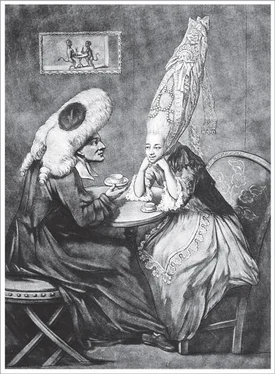Bill Bryson - At Home
Здесь есть возможность читать онлайн «Bill Bryson - At Home» весь текст электронной книги совершенно бесплатно (целиком полную версию без сокращений). В некоторых случаях можно слушать аудио, скачать через торрент в формате fb2 и присутствует краткое содержание. Жанр: Старинная литература, на английском языке. Описание произведения, (предисловие) а так же отзывы посетителей доступны на портале библиотеки ЛибКат.
- Название:At Home
- Автор:
- Жанр:
- Год:неизвестен
- ISBN:нет данных
- Рейтинг книги:4 / 5. Голосов: 1
-
Избранное:Добавить в избранное
- Отзывы:
-
Ваша оценка:
- 80
- 1
- 2
- 3
- 4
- 5
At Home: краткое содержание, описание и аннотация
Предлагаем к чтению аннотацию, описание, краткое содержание или предисловие (зависит от того, что написал сам автор книги «At Home»). Если вы не нашли необходимую информацию о книге — напишите в комментариях, мы постараемся отыскать её.
At Home — читать онлайн бесплатно полную книгу (весь текст) целиком
Ниже представлен текст книги, разбитый по страницам. Система сохранения места последней прочитанной страницы, позволяет с удобством читать онлайн бесплатно книгу «At Home», без необходимости каждый раз заново искать на чём Вы остановились. Поставьте закладку, и сможете в любой момент перейти на страницу, на которой закончили чтение.
Интервал:
Закладка:
Meanwhile, other developments increased the range of food storage possibilities enormously. In 1859, an American named John Landis Mason solved the challenge that the Frenchman Nicolas-François Appert had not quite mastered the better part of a century before. Mason patented the threaded glass jar with a metal screw-on lid. This provided a perfect seal and made it possible to preserve all kinds of foods that would previously spoil. The Mason jar became a huge hit everywhere, though Mason himself scarcely benefited from it. He sold the rights in it for a modest sum, then turned his attention to other inventions—a folding life raft, a case for keeping cigars fresh, a self-draining soap dish—that he assumed would make him rich, but his other inventions were neither successful nor even very good. As one after another failed, Mason withdrew into a semi-demented poverty. He died alone and forgotten in a New York City tenement house in 1902.
An alternative, and ultimately even more successful, method for preserving food—namely, canning—was perfected in England by a man named Bryan Donkin working between 1810 and 1820. Donkin’s invention preserved foods beautifully, though the early cans, made of wrought iron, were heavy and practically impossible to get into. One brand bore instructions to open them with a hammer and chisel. Soldiers usually attacked them with bayonets or fired bullets into them. The real breakthrough awaited the development of lighter materials, which in turn enabled mass production. At the beginning of the 1800s, one man, working hard, could produce about sixty cans a day; by 1880, machines could pump out fifteen hundred in a day. Surprisingly, getting them open remained a serious impediment much longer. Various cutting devices were patented, but all were difficult to use or nearly lethal if they slipped. The safe, modern manual can opener—the sort with two rolling wheels and a twisting key—dates only from 1925.
Developments in food preservation were part of a much wider revolution in food production that changed the dynamics of agriculture everywhere. The McCormick reaper permitted the mass production of grain, which in turn allowed America to produce livestock on an industrial scale. This in its turn led to the development of large meatpacking centers and improved methods of refrigeration—and ice remained at the heart of that well into the modern era. As late as 1930, America had 181,000 refrigerated railway cars, all cooled with ice.
The sudden ability to transport food over great distances and to keep it fresh enough to reach far-off markets transformed agriculture in many distant lands. Kansas wheat, Argentinian beef, New Zealand lamb, and other foodstuffs from around the world began to turn up on dinner tables thousands of miles away. The repercussions in traditional farming areas were enormous. You don’t have to venture far into any New England forest to find the ghostly house foundations and old field walls that denote a farm abandoned in the nineteenth century. Farmers throughout the region left their farms in droves, either to work in factories or to try their hand at farming on better land farther west. In a single generation Vermont lost nearly half its population. Europe suffered equally. “British agriculture virtually collapsed in the last generation of the nineteenth century,” says Felipe Fernández-Armesto, and with it went all the things it had previously supported—farm laborers, villages, country churches and parsonages, a landed aristocracy. Ultimately, it put our rectory, and thousands of others like it, into private hands.
During a visit to New England in the autumn of 2007, I drove some fifteen miles north from Boston to see Lake Wenham, once briefly the most famous lake in the world. Today Wenham stands along a quiet highway in attractive countryside and provides a picturesque glimpse of water for anyone driving between the towns of Wenham and Ipswich. Lake Wenham now serves as a freshwater reservoir for Boston, so it is surrounded by a high chain-link fence and is closed to the public. A historical marker beside the road celebrates the town of Wenham’s tercentenary in 1935 but makes no mention of the ice trade that once made the lake famous.
III
If we were to step into the kitchen of the rectory in 1851, a number of differences would strike us immediately. For one thing, there would have been no sink. Kitchens in the mid-nineteenth century were for cooking only (at least in middle-class homes); washing up was done in a separate scullery—the room we will visit in Chapter V—which meant that every dish and pot had to be carried to a room across the corridor to be scrubbed, dried, and put away, then brought back to the kitchen the next time it was needed. That could entail many trips, for the Victorians did a lot of cooking and provided an awesome array of dishes. What Shall We Have for Dinner? , a popular book of 1851 by Lady Maria Clutterbuck (who was actually Mrs. Charles Dickens), gives a good impression of the kind of cooking that went on in those days. One suggested menu—for a dinner for six people—comprises “carrot soup, turbot with shrimp sauce, lobster patties, stewed kidneys, roast saddle of lamb, boiled turkey, knuckle of ham, mashed and brown potatoes, stewed onions, cabinet pudding, blancmange and cream, and macaroni.” Such a meal, it has been calculated, could generate 450 pieces of washing up. The swing door leading from the kitchen to the scullery must have swung a lot.
Had you arrived at the Old Rectory at a time when the housekeeper, Miss Worm, and her assistant, a nineteen-year-old village girl named Martha Seely, were baking or cooking, you may well have found them doing something that until recently had not been done at all—carefully measuring out ingredients. Until almost the middle of the century instructions in cookbooks were always wonderfully imprecise, calling merely for “some flour” or “enough milk.” What changed all that was a revolutionary book by a shy, sweet-natured poet in Kent named Eliza Acton. Because Miss Acton’s poems weren’t selling, her publisher gently suggested she might try something more commercial, and in 1845, she produced Modern Cookery for Private Families . It was the first book to give exact measurements and cooking times, and it became the work on which all cookbooks since have been, almost always unwittingly, modeled.
The book enjoyed considerable success but then was abruptly shouldered aside by a brasher work—the vastly, lastingly, powerfully, mystifyingly influential Book of Household Management by Isabella Beeton. There has never been another book quite like it, both for influence and content. It was an instant success and would remain a success well into the following century.
Mrs. Beeton made clear that running a household was a grave and cheerless business: “As with the commander of an Army, or the leader of any enterprise, so it is with the mistress of a house.” Only a moment earlier she had saluted her own selfless heroism: “I must frankly own, that if I had known, beforehand, that this book would cost me the labour which it has, I should never have been courageous enough to commence it,” she declared, leaving the reader with a sense of mild gloom and guilty indebtedness.
Its title notwithstanding, The Book of Household Management whips through its professed subject in just twenty-three pages, then turns to cooking for nearly the whole of the next nine hundred. Despite this bias toward the kitchen, however, Mrs. Beeton didn’t actually like cooking and didn’t go near her own kitchen if she could possibly help it. You don’t have to read far into the recipes to begin to suspect as much—when she suggests, for instance, boiling pasta for an hour and three quarters. Like many of her nation and generation, she had an innate suspicion of anything exotic. Mangoes, she said, were liked only “by those who have not a prejudice against turpentine.” Lobsters she found “rather indigestible” and “not so nutritive as they are generally supposed to be.” Garlic was “offensive.” Potatoes were “suspicious; a great many are narcotic, and many are deleterious.” Cheese she thought fit only for sedentary people—she didn’t say why—and then only “in very small quantities.” Especially to be avoided were cheeses with veins, since these were fungal growths. “Generally speaking,” she added, just a touch ambiguously, “decomposing bodies are not wholesome eating, and the line must be drawn somewhere.” Worst of all was the tomato: “The whole plant has a disagreeable odour, and its juice, subjected to the action of the fire, emits a vapour so powerful as to cause vertigo and vomiting.”
Читать дальшеИнтервал:
Закладка:
Похожие книги на «At Home»
Представляем Вашему вниманию похожие книги на «At Home» списком для выбора. Мы отобрали схожую по названию и смыслу литературу в надежде предоставить читателям больше вариантов отыскать новые, интересные, ещё непрочитанные произведения.
Обсуждение, отзывы о книге «At Home» и просто собственные мнения читателей. Оставьте ваши комментарии, напишите, что Вы думаете о произведении, его смысле или главных героях. Укажите что конкретно понравилось, а что нет, и почему Вы так считаете.












